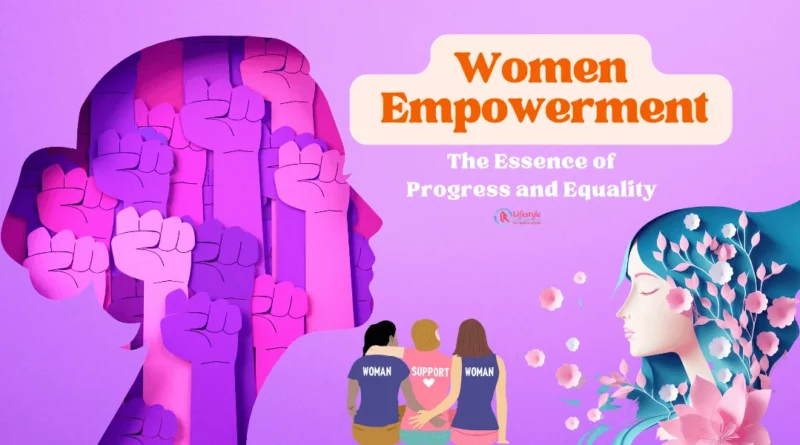Women Empowerment: Unveiling the True Essence
Women empowerment, a phrase that echoes through the corridors of history, the chambers of politics, the classrooms of education, and the heartbeats of society. It encapsulates a journey from marginalization to emancipation, from inequality to fairness, and from silence to voice. To comprehend its true meaning and significance, we delve into various dimensions, each illuminating a unique facet of this transformative journey.
Defining Women Empowerment: The Essence of Progress and Equality
Women empowerment, a phrase often heard but perhaps not fully understood in its depth and implication, is the clarion call of our times. It embodies a movement, a philosophy, and a demand for a world where women stand shoulder to shoulder with men, where their voices are heard, their choices respected, and their potential realized without bounds. It is a quest for a society where gender does not dictate destiny.
This article embarks on a comprehensive exploration of women empowerment, aiming to shed light on its various facets and unveil the true meaning that resides within its folds. From historical perspectives that shaped the narrative of women’s rights to the legal and political structures essential for safeguarding those rights, we will journey through the evolution of this indispensable movement.
We will delve into economic and educational dimensions of empowerment, recognizing that true progress stems from economic independence and access to quality education. Moreover, we will scrutinize the social and cultural shifts imperative for emancipating women from stereotypes and prejudices, and acknowledge the influential role models who have catalyzed this transformative movement.
Historical Perspectives on Women’s Empowerment
The roots of women’s empowerment stretch deep into the past. Exploring historical milestones helps us understand the progression of women from being confined to domestic roles to becoming agents of change. From suffragette movements to contemporary feminist waves, history paints a vivid picture of the struggles and triumphs of women.
Legal and Political Aspects of Women Empowerment
Laws and policies are the bedrock of societal change. This section unravels how legal frameworks have evolved to ensure women’s rights and participation in political and public spheres. From voting rights to representation, legislation has played a pivotal role in altering societal norms.
Economic Empowerment of Women
Economic empowerment is a key driver of overall empowerment. Financial independence empowers women to make choices and decisions that impact their lives and the lives of their families. This section delves into initiatives, entrepreneurship, and breaking the glass ceiling in the corporate world.
Educational Empowerment of Women
Education is often hailed as the first step towards empowerment. It equips women with knowledge, critical thinking skills, and a broader perspective. From education barriers to advancements, this section highlights the transformative power of education.
Social and Cultural Shifts for Women Empowerment
Society and culture have a profound impact on women’s empowerment. Breaking stereotypes and challenging societal norms are vital steps towards a more inclusive and empowering world. This section explores changing mindsets and societal attitudes.
You might be interested in reading: The Hate Economy: How Online Negativity Drives Profits
Role Models in Women Empowerment
Highlighting individuals who have defied odds and made a significant difference is crucial. Role models serve as inspirations, showcasing that empowerment is achievable. From iconic historical figures to contemporary game-changers, their stories resonate with aspiring women.
Example: Kamala Harris (USA): Kamala Harris is the first female Vice President of the United States, breaking barriers and inspiring women across the world to pursue leadership roles in politics and beyond.
Savitribai Phule: She played a crucial role in women’s empowerment with the support of her husband, Jyotirao Phule. In 1848, Savitribai and her husband established one of the first modern Indian girl’s schools in Pune at Bhide Wada. She was also a prolific Marathi writer.
Challenges and Hurdles in Achieving Women Empowerment
The journey towards empowerment is not without roadblocks. Discrimination, violence, and deeply entrenched biases persist. Recognizing these challenges is the first step towards overcoming them.
The Intersectionality of Women’s Empowerment
Women’s experiences and paths to empowerment are shaped by various intersecting factors like race, ethnicity, class, sexuality, and more. Intersectionality acknowledges the complexity of women’s lives and experiences, ensuring a more inclusive approach.
The Future of Women Empowerment
As we conclude our exploration, we look to the future. What lies ahead for women empowerment? What are the emerging trends and areas of focus? We envision a world where women continue to break boundaries and where gender equality is not a dream but a lived reality.
Women empowerment is a multi-dimensional journey, traversing through historical, social, economic, and cultural landscapes. It’s a beacon of hope, a call for change, and a vision of a world where every woman stands empowered, heard, and valued.
Also Read:
From Streets to Cyberspace: Why Women Are Most Targeted More Often
For News related to entertainment visit our entertainment website:
https://www.glamworldtalks.com/



